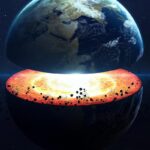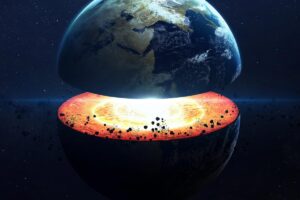Introduction: A Paradigm Shift in Understanding Extinction Events
For decades, scientists believed that mass extinctions were rare, random, and largely unpredictable events caused by cataclysmic events like asteroid impacts or volcanic eruptions. However, a groundbreaking new study has turned that belief on its head. Researchers have discovered an “extremely unlikely” but highly significant pattern in Earth’s history—suggesting that mass extinctions may not be as random as once thought. This paradigm-shifting discovery could completely reshape how we understand biological evolution, survival of species, and even the long-term future of humanity.
What the Study Found: Predictability in Chaos?
Published in Nature Communications, the new study analyzes over 500 million years of fossil data, uncovering an unexpected cyclical pattern in mass extinction events. The researchers noticed that these mass die-offs appear to occur roughly every 27 million years—a striking regularity for something previously assumed to be completely random.
This finding is being described as “extremely unlikely” because such a consistent interval should not occur in a system governed by chaotic, random geological and astronomical processes. But the data speaks otherwise.
Rewriting the Extinction Timeline
Key Findings:
27-million-year intervals between major extinction events.
Correlation with geological and astronomical cycles, including tectonic shifts and galactic positioning.
Possible links to volcanic activity, sea-level changes, and even Earth’s journey through the Milky Way’s galactic plane.
These patterns were seen in five of the major mass extinctions, including:
The Permian-Triassic extinction (aka “The Great Dying”)
The Cretaceous-Paleogene extinction, which wiped out the dinosaurs
How Could This Be Possible?
The study proposes several potential explanations:
Galactic Cycles: As Earth moves through the dense plane of the Milky Way galaxy, it may be bombarded with cosmic rays or encounter dark matter clouds that trigger geological upheavals.
Tectonic Rhythms: Internal Earth processes like supercontinent cycles may lead to increased volcanic activity, oxygen depletion in oceans, and atmospheric changes.
Mantle Plumes: Deep-earth thermal activities that rise and cause supervolcanoes may be linked to regular planetary cycles.
If mass extinctions have such natural rhythmic triggers, this would suggest Earth has a biological reset mechanism built into its timeline.
Why It Matters: Implications for Today and Tomorrow
This study has huge implications for not only evolutionary biology but also climate science, astrobiology, and even long-term space planning.
1. Climate Change Forecasting
Understanding natural cycles may help us differentiate between human-induced climate changes and Earth’s natural patterns—improving prediction models and policy decisions.
2. Conservation Biology
If certain extinction events are inevitable or cyclical, then conservation efforts can be more strategically timed and better focused on resilience and genetic diversity.
3. Space Exploration and Survival
If Earth is on a natural clock for mass extinction, should we prepare humanity to become a multi-planetary species before the next cycle? The countdown may have already started.
Controversy and Criticism
Despite its significance, the study is not without critics. Some paleontologists argue that the fossil record is too incomplete to draw such precise conclusions. Others believe the appearance of regularity may be a statistical artifact. However, as data science and machine learning tools become more sophisticated, the case for periodic extinctions grows stronger.
SEO Keywords:
Mass extinction patterns, cyclical extinction events, 27 million year extinction cycle, fossil record analysis, geological time scale, galactic extinction theory, climate change and extinction, supervolcano extinction events, earth mass extinction timeline, new extinction study 2025, space and extinction connection, Permian Triassic extinction, Cretaceous extinction dinosaurs, dark matter and extinction, Earth history cycles, fossil extinction evidence, next mass extinction prediction
Final Thoughts
This “extremely unlikely” finding is a wake-up call for how we perceive extinction—not as isolated, catastrophic accidents, but as cyclic and possibly inevitable events tied to the rhythms of Earth and the cosmos. Understanding these patterns is not just about explaining the past; it’s about preparing for the future.
Whether we are ready for the next wave or not, science has just handed us a cosmic clock—and it’s ticking.
















+ There are no comments
Add yours